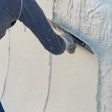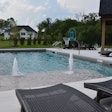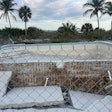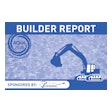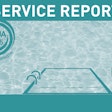
From gymnastics to track and field to beach volleyball, the feats of supreme fitness and competitive drive were nothing short of astounding. Watching those muscled bodies on display doing their almost superhuman thing is a powerful source of inspiration. Through the magnificent efforts of these elite athletes, hopefully we, too, can see our own untapped potential. And though few of us could ever do hands-free cartwheels on a balance beam or 100 meters in less than 10 seconds, the examples of dedication, hard work and competitive drive do convey something very useful for all forms of meaningful pursuit.
There were none better than those found in the swimming pools at the majestic Olympic Park Aquatics Centre, where the legendary Michael Phelps, rising phenomenon Missy Franklin and scores of fellow swimming, water polo, diving and synchronized swimming sensations drove their events to highest levels yet seen.
What these young people do in water is nothing short of jaw-dropping. They can swim faster than many of us land animals can run, fly through the air with bird-like agility and battle for goals like mythic warriors. And they look damn good doing it to boot!
As I quietly reveled in this quadrennial pageant of personal achievement, I couldn’t help but feel the bitter irony found in our society’s declining overall physical condition. As has been widely reported, we live in a time when a select few are defining new frontiers of health and fitness, while far greater numbers are resigned to lives of poor nutrition, inactivity, obesity and all the malevolent effects contained therein.
Okay, that’s nothing new. We’ve been hearing it for years. So what are we going to do about it?
One way forward is a new program from the National Swimming Pool Foundation, Step Into Swim. You may have heard of it by now — Step Into Swim is a newly minted campaign asking pool, spa and aquatic professionals, businesses and associations to sponsor organizations that provide swimming instruction.
According to the program’s website, www.stepintoswim.org, “Beyond the personal pain caused by poor health, the financial burden of obesity is estimated to be $147 billion/year. In addition, the tragic instances of drowning will cost society $100 billion for the next 20 years. Obesity trends are likely to continue based on increased childhood obesity rates and Census Bureau estimates that there will be 24 million more 65-plus year olds in the next 10 years. Aquatic activity is one of the best options available for aging and out-of-shape people. Unfortunately, about half of Americans are afraid of deep water or cannot swim.”
In support of the program NSPF has released a white paper covering a comprehensive set of statistics detailing the extent of our collectively flabby nation. The data is stunning in its slovenly badness. As an example, the white paper states, “In 1990, no state had greater than a 15 percent obesity rate. In stark contrast, by 2010, no state had an obesity rate under 20 percent. In 2010, twelve states had an over 30 percent obesity rate. The obesity trend is not showing signs of reversal. Since 1980, the obesity rate among children has tripled, with 17 percent (12.5 million) of children and adolescents between 2 and 19 years old being obese.”
With that and other equally shocking stats as a foundation, the document goes on to describe in beautiful detail the rationale for swimming as a key part of the solution, addressing key issues such as the factors contributing to many people’s resistance to swimming to some the of vast health benefits of swimming, including data pointing to decreased mortality rates.
You can read it yourself at www.stepintoswim.org/documents/white_paper.pdf. It’s a quick read but one that delivers a lasting impact.
Step Into Swim is being promoted as a 10-year campaign that will use a range of measures to promote organizations that do the important work of educating would-be swimmers. The first event is the Step Into Swim Congress, scheduled for October 10, at the Nauticus Museum, adjacent to the battleship Wisconsin in Norfolk, Va.
For those of us in an industry that provides venues for swimming and all other forms of aquatic exercise, getting behind this program is a no-brainer. We live in a time when our society desperately needs to be encouraged, cajoled and even seduced into the water as a way to help stem the tide of obesity. Supporting swimming instruction is good for individuals of all ages and levels of fitness, it’s great for our industry’s interest and it’s crucial for our society as we grapple with aging Baby Boomers and rising health costs.
Besides, wouldn’t it be just more fun to live in a world where fitness, health and happiness were the norm and not the exception? Where examples of aquatic excellence were commonplace, not just something you watch on TV for a few days every four years?
As often said by my dear friend Laurie Batter, the media-relations guru behind Step Into Swim, “Live to swim and swim to live.”
































